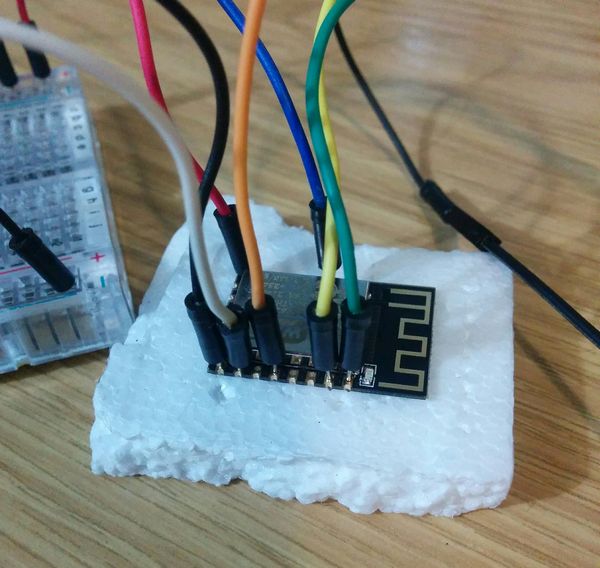The ESP8266 ESP-12 module has a 2mm pitch, making it difficult to use on a breadboard with a 2.54mm pitch. Usually you are required to solder the module to a breakout board first.
This is just a quick ‘hack’ to connect the module to a breadboard for some testing without soldering it to a breakout board first.
The cheap prototyping jumper wires you can find on eBay or sites like Banggood.com, the ones with the round pins, fit through the holes in the ESP-12 module (probably some others too). Because the holes are through-hole plated the jumper pins make contact, even if they’re a bit loose.
Now all you need is a way to secure them so they don’t all fall out. For this, a piece of foam works great!
Some IC’s are shipped in conductive foam, so test the resistance of the foam with your multimeter first!
EDIT: I initially said here to avoid the conductive foam, but a message left below by a user suggests that the conductive foam usually has a very high resistance and should be OK to use and would also be beneficial because it provides ESD protection. I have not tested using this foam though.
I find this is a quick way to test new modules before soldering them into a more permanent project.

Nice!
Dear stranger on the internet, thank you for thinking of this. It’s brilliant!!
This is going to save me $$$ because now I don’t need to make a programmer 🙂
Good idea, but I would suggest to actually use either the black or pink foam which are used for shipping ICs. Yes, it’s conductive, but the resistance is usually very high. This is an advantage since it will reduce the chance of damaging the parts by ESD. Non-conductive foam may give problems with ESD.
great idea, Andre
thanks!
mICHael
Brilliant 🙂
after a long long time I’ve found something genuinely innovative and brilliant. without any fuss, pre requisites.
i really had a damn! why dint i think of that! moment.